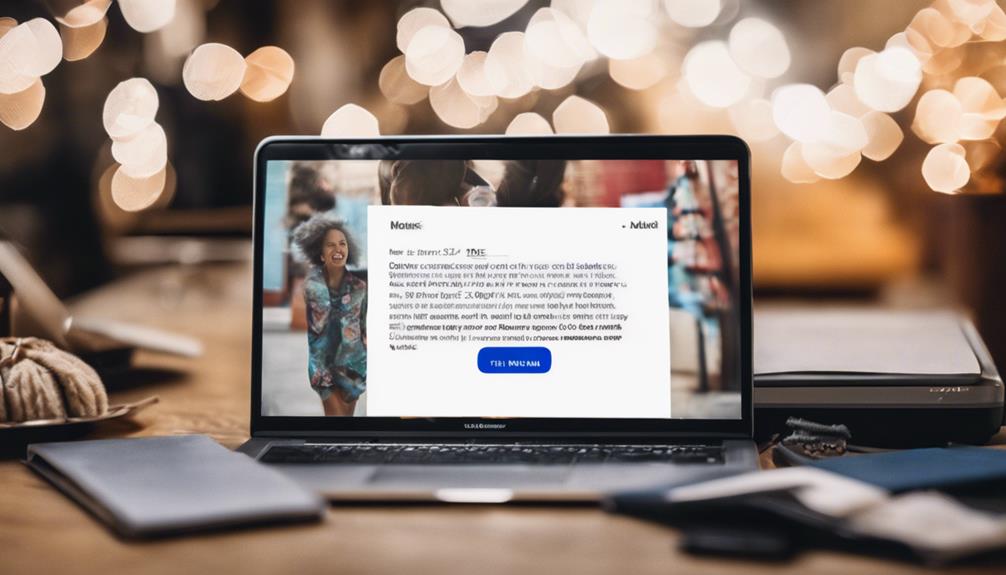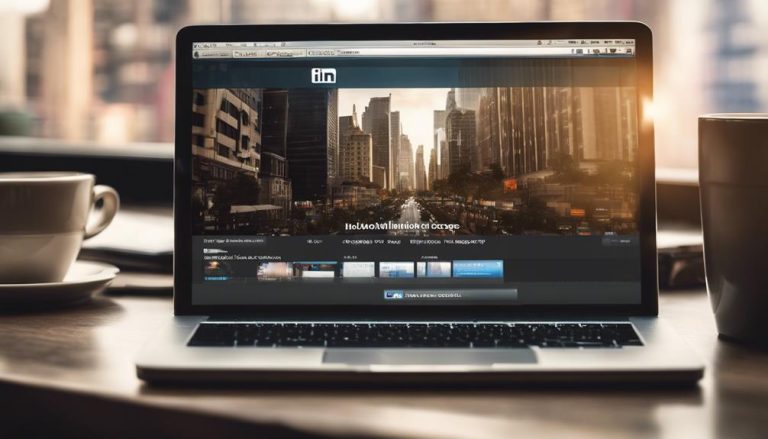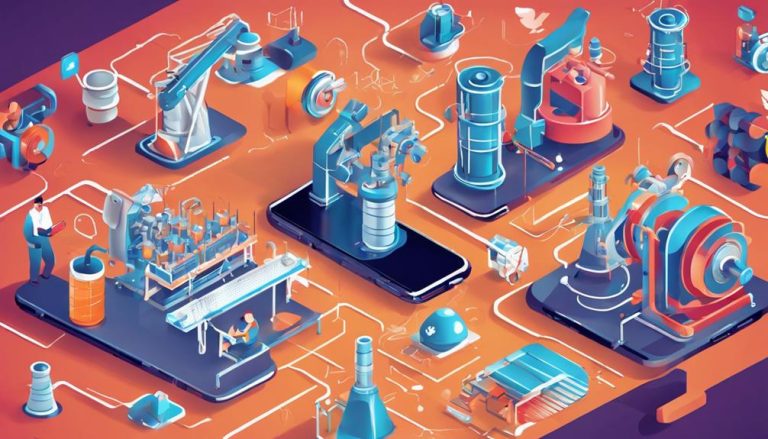Personalized Email Marketing Campaign Examples
You're likely no stranger to the concept of personalized email marketing, but are you maximizing its potential in your campaigns? By tailoring your emails to individual subscribers, you can substantially boost engagement and conversion rates. But where do you start? From welcome emails that acknowledge subscribers' specific interests to location-based campaigns that pinpoint their whereabouts, the possibilities are vast. As you explore the world of personalized email marketing, you'll discover that even the smallest details can make a big impact. But what are some real-world examples of successful personalized email marketing campaigns, and how can you replicate their success?
Key Takeaways
- Tailored welcome email campaigns use segmentation and triggers to create personalized onboarding experiences.
- Location-based email marketing leverages geo targeting to increase conversion rates by up to 20%.
- Personalized emails using purchase history drive higher conversion rates, up to a 25% increase.
- Abandoned cart recovery emails use data-driven insights to boost conversions and drive revenue.
Tailored Welcome Email Campaigns
When you onboard new subscribers, a tailored welcome email campaign can substantially boost engagement and conversion rates by delivering relevant content that addresses their specific interests and needs.
By segmenting your email list based on subscriber behavior, demographics, and preferences, you can create a more personalized onboarding experience. For instance, you can set up triggers that automatically send targeted content to new subscribers who've abandoned their shopping cart or engaged with a specific blog post.
By tracking user interactions, such as email open rates and click-through rates (CTR), you can continuously refine and optimize your welcome email campaigns for improved results.
It's vital to tailor the tone and messaging of your emails to align with the specific stage of the subscriber's onboarding experience. Studies show that relevant email campaigns drive higher CTR (3.12%) compared to generic emails (0.86%), ultimately influencing subscriber conversion.
Make certain to craft unique welcome series based on segmented lists and align messaging that responds to distinct behaviors for compelling conversions.
Location-Based Email Marketing
By leveraging location-based data, you can create targeted email campaigns that resonate with subscribers in specific geographic regions, increasing the likelihood of conversion by up to 20% compared to generic, non-location-based emails.
This is achieved through geo targeting strategies that utilize IP addresses, GPS coordinates, or mobile device IDs to pinpoint subscribers' locations.
By doing so, you can craft localized promotions that cater to regional preferences, interests, and behaviors.
For instance, if you're a retailer with physical stores in different cities, you can send location-based emails promoting in-store events, sales, or new product launches specific to each region.
This approach not only boosts engagement but also drives foot traffic to your stores.
Additionally, you can use location-based data to segment your email list and create targeted campaigns based on subscribers' proximity to your stores or events.
By incorporating location-based data into your email marketing strategy, you can create highly relevant and personalized campaigns that drive conversions and revenue.
Purchase History Driven Emails
What drives higher conversion rates than generic emails – up to a 25% increase, in fact? It's personalized emails that leverage your customers' purchase history.
By analyzing their buying behavior, you can create targeted campaigns that speak directly to their interests. For instance, you can send product recommendations based on their previous purchases or browsing history. This approach not only shows that you care about their preferences but also increases the chances of them making a repeat purchase.
To take it a step further, you can use purchase history to celebrate customer milestones, such as the anniversary of their first purchase or a loyalty program milestone.
This type of personalized email campaign can help strengthen customer relationships and foster loyalty. By using data to inform your email marketing strategy, you can create campaigns that are both timely and relevant.
For example, if a customer has purchased a product that typically needs to be replaced after a certain period, you can send them a reminder email with a special offer. By doing so, you'll not only drive sales but also demonstrate your commitment to their needs.
Abandoned Cart Recovery Emails
Since a significant portion of online shoppers abandon their carts before completing a purchase, leveraging data-driven insights to create effective Abandoned Cart Recovery Emails can be a game-changer for boosting conversions and driving revenue.
You can use data to identify the most common points of Cart Abandonment and tailor your Email Reminders to address these specific pain points. For instance, if you notice that many customers are abandoning their carts due to high shipping costs, you can send a reminder email offering free shipping or a discount on their next purchase.
To maximize the effectiveness of your Abandoned Cart Recovery Emails, you must personalize them based on the customer's browsing history and purchase behavior.
You can use segmentation to create targeted email campaigns that speak directly to the customer's interests and needs. Additionally, consider using A/B testing to optimize the subject lines, email copy, and CTAs of your Abandoned Cart Recovery Emails.
Dynamic Content Email Campaigns
You can take your email marketing to the next level by incorporating dynamic content, which allows you to tailor the email experience to each individual's preferences, behaviors, and demographics, resulting in markedly higher engagement rates and conversions.
By using dynamic content, you can create personalized messaging that resonates with your audience, increasing the likelihood of driving sales and revenue.
Product recommendations: Use customer data to suggest products based on their browsing history, purchase behavior, and search queries.
Location-based content: Tailor your email content to specific regions or cities, taking into account local events, weather, and cultural nuances.
Birthday and anniversary emails: Send personalized messages to customers on their special days, offering exclusive discounts and promotions.
Abandoned cart reminders: Use dynamic content to remind customers about the products they left behind, with personalized messages and incentives to complete the purchase.
Frequently Asked Questions
Can Email Campaigns Be Personalized Without User-Provided Data?
You can personalize email campaigns without user-provided data by leveraging implicit preferences and behavioral triggers. Analyze recipients' interactions, such as opens, clicks, and purchases, to create targeted content that resonates with their inferred interests.
What's the Ideal Email Personalization to Sales Pitch Ratio?
You'll want to balance personalization and sales pitches, typically aiming for a 60:40 ratio, ensuring segmentation strategies target high-value customers without overwhelming them. Be mindful of personalization limits to avoid over-personalization and potential backlash.
Can I Use Customer's Purchase History in Every Email Campaign?
When deciding what to include in your email campaigns, consider leveraging customers' purchase history to create targeted purchase triggers and timely cart reminders. This strategic approach will likely increase conversion rates, driving more sales.
What if Subscribers Change Locations During the Email Campaign?
You'll need to account for subscribers who change locations during the campaign. Implement location updates and geo-targeting strategies to certify accuracy. Use IP targeting, GPS data, or ask subscribers to update their location to maintain relevance.
Does Dynamic Content Decrease Email Open Rates Over Time?
You might experience content fatigue if dynamic content is overused, leading to decreased email open rates over time. Analyzing subscriber engagement metrics helps identify dynamic drawbacks, enabling data-driven adjustments to prevent fatigue and maintain peak open rates.
Conclusion
You've explored various personalized email marketing campaign examples that drive engagement and conversion.
By segmenting welcome emails, leveraging location-based targeting, analyzing purchase history, and recovering abandoned carts, you can create targeted campaigns that resonate with subscribers.
Don't forget to incorporate dynamic content to further enhance personalization.
By integrating these strategies, you'll be well on your way to maximizing ROI and building strong relationships with your subscribers.







